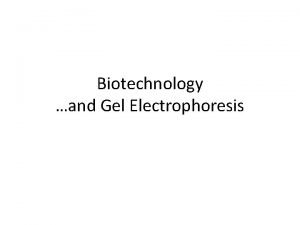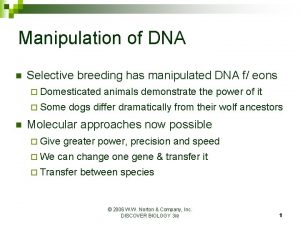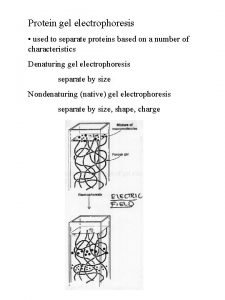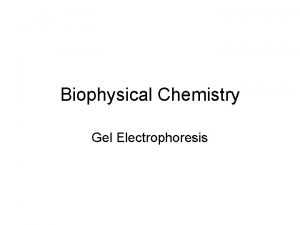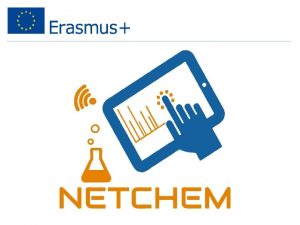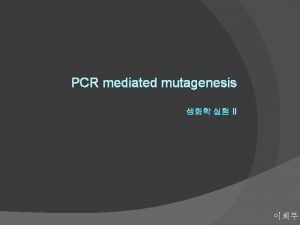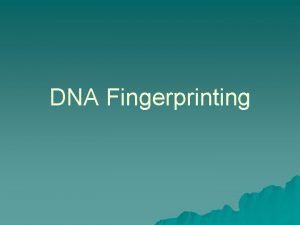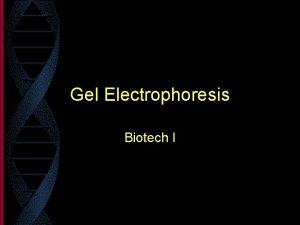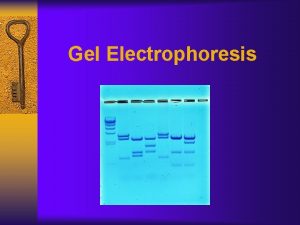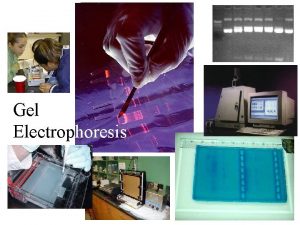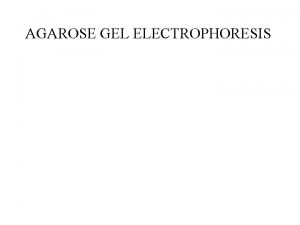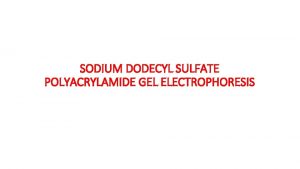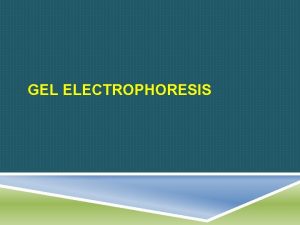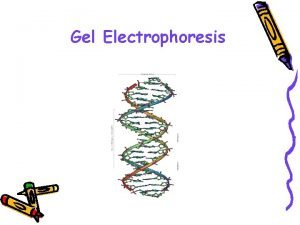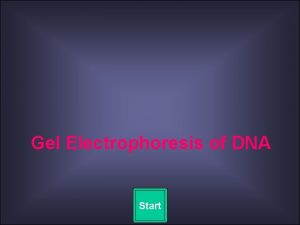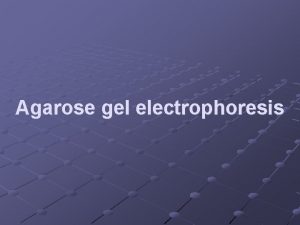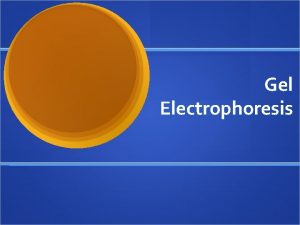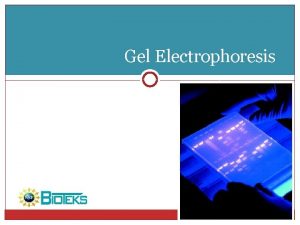Gel Electrophoresis What is Gel Electropho Gel electrophoresis














- Slides: 14

Gel Electrophoresis

What is Gel Electropho Gel electrophoresis is a laboratory technique used to separate and identify segments of DNA. Analysis of the pattern of DNA fragments called a DNA Fingerprint/DNA Profile, enables us to discriminate between suspects accused of a crime or potential fathers in a paternity suit.

How is Gel Electrophoresis Done? First, segments of DNA must be isolated or cut from chromosomes. This is done by DNAcleaving enzymes called restriction enzymes. Restriction enzymes are bacterial proteins that can cut both strands of the DNA molecule at a specific nucleotide sequence. There are hundreds of restriction enzymes; each can cut DNA at a specific point in the specific nucleotide sequence. They are sequence specific.

Restriction Enzymes and their cutting patterns: Eco. R 1 GAATTC CTTAAG Bam. HI GGATCC CCTAGG

Hind. III AAGCTT TTCGAA Kpnl GGTACC C CATGG

After segments of DNA are removed from chromosomes using restriction enzymes, they are applied to a thin layer of gel, called agarose gel. The gel is molded so that small wells form at one end. Small amounts of fragmented DNA are placed into these wells using a pipette. The gel is placed in a solution and an electric field is applied, making one end of the gel positive and the other end negative. The DNA in the wells is at the negative end because DNA is negatively charged.


The negatively charged fragments of DNA travel toward the positive end. The smaller the fragment, the faster it moves through the gel. The smallest fragments move the farthest from the well. DNA fragments are separated by SIZE.


After a certain length of time, the electrical field is shut off and the DNA segments remain in their final positions. The DNA segments are then identified by their reaction with radioactive chemicals. A pattern of banding can be seen under ultraviolet light. This pattern of banding is analyzed and used to determine the sequence of the DNA.

Uses of Gel Electrophoresis (DNA Fingerprinting) Crime DNA Fingerprints are highly specific. The chances of two people having exactly the same DNA profile is 30, 000 million to 1 (except for identical twins). Blood, hair, saliva, semen, and body tissue cells are some of the biological materials that can be used for DNA fingerprinting. If a crime is committed and DNA is at the scene, the pattern of the DNA fingerprint can be compared between DNA found at scene, the victim and suspect.

Example A murder occurred. The forensics team retrieved a blood sample from the crime scene. The prepared DNA fingerprints of the blood sample and several suspects.

Medical Problems DNA fingerprints can be used to determine whether a particular person is the parent of a child. This information can be used in paternity suits and inheritance cases.

Example on Your Own! Use the enzyme Eco. R 1 GAATT C CTTAA G to cut the following fragments of DNA. Compare the DNA of person A and person B by running their DNA on a gel.
 Gel electrophoresis definition
Gel electrophoresis definition Disadvantages of agarose gel electrophoresis
Disadvantages of agarose gel electrophoresis Basic principles of electrophoresis
Basic principles of electrophoresis Part a
Part a Selective breeding definition biology
Selective breeding definition biology Electrolysis gel
Electrolysis gel Electrophoresis definition
Electrophoresis definition Advantages of agarose gel electrophoresis
Advantages of agarose gel electrophoresis Electrophoresis lab ap bio
Electrophoresis lab ap bio How does dna move in gel electrophoresis
How does dna move in gel electrophoresis Polyacrylamide gel electrophoresis (page)
Polyacrylamide gel electrophoresis (page) Gel electrophoresis result
Gel electrophoresis result Gel electrophoresis separates dna by
Gel electrophoresis separates dna by Process of gel electrophoresis
Process of gel electrophoresis Is gel electrophoresis a biotechnology
Is gel electrophoresis a biotechnology
